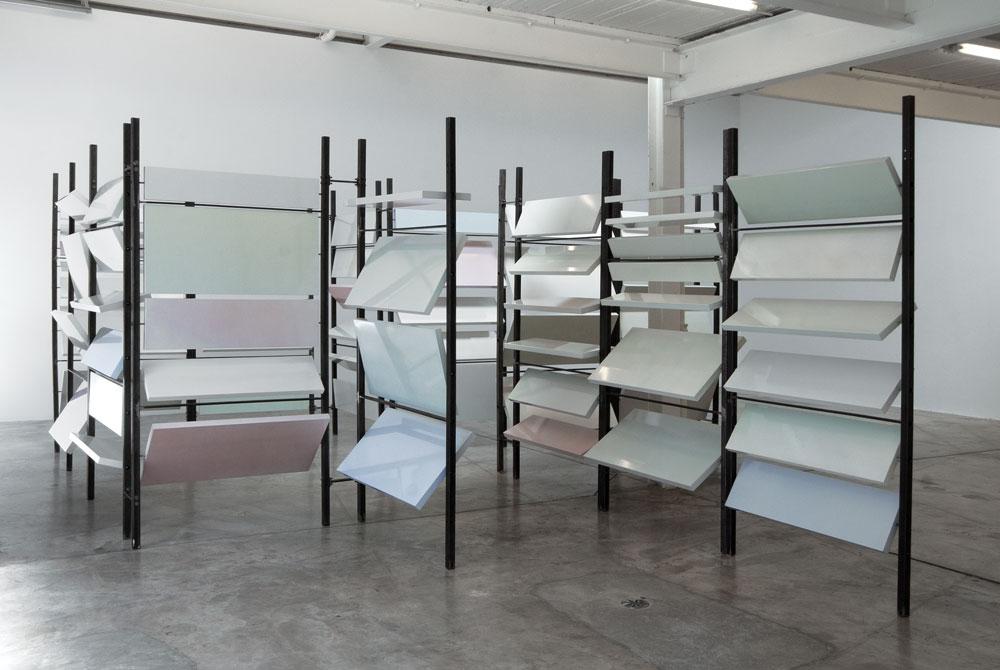This past summer, Rodney LaTourelle exhibited a work at Diaz Contemporary that simultaneously functioned—with a participatory twist—as sculpture, painting and architecture. Chromakenón (2012–13), which combines the Latin word for “colour” with the Greek word for “endless space,” was originally conceived as part of the 2012 exhibition “Winnipeg Now” at the Winnipeg Art Gallery. It was also exhibited at Optica in Montreal. Its various presentations have highlighted the mutability of the work in the face of differing contexts.
The modular sculptural installation is composed of a large, winding, raw-steel grid structure that acts as the physical support for a number of variously sized wooden rectangular panels. Each of the panels has been treated with pearlescent automotive paint in a subdued palette of gaseous pinks, violets, beiges and greens. Furthermore, all of them have been hinged so as to allow the viewer to physically manipulate them on a horizontal axis. The surface finish of these modular components contributes to a destabilizing effect, as the unique position of the viewer reveals subtle shifts in hue which are not only dependent on a subjective point of view, but also on the position of the panels themselves.
While the structure evokes familiar architectural and design elements, such as venetian blinds, screens, windows, corridors and frames, the participatory mobility of the installation hones in on concerns previously investigated through the sculptural work of Charlotte Posenenske, in Revolving Vane: Series E (1967), as well as Gerhard Richter, in 4 Glasscheiben (4 Panes of Glass) (1967), both of which similarly set up parameters within which the viewer is granted the opportunity to manipulate the art within a dialectic of opening and closing, or to reveal and conceal it in relation to position and perception. One immediately thinks of the mechanisms of the eye itself and the potential for individual panels to function as combinative paintings, not unlike the Impressionists’ use of “light,” Jules Olitski’s colour-field paintings or Mary Corse’s White Light series of the late sixties.
Shifting and evolving, LaTourelle’s Chromakenón constantly presents an elusive dimension of experience that evokes multifaceted historical precedents while generously dematerializing the need for a definitive claim to a point of origin or a stabile reading. Despite being predicated on the premise of subjective perspectives, the work ultimately operates to fulfill a democratic function by evaporating these assurances.
This is a review from the Winter 2014 issue of Canadian Art. To read more from this issue, visit its table of contents. To read the entire issue, pick up a copy on newsstands, the App Store or Zinio until March 14.

 Rodney LaTourelle, Chromakenón, 2012–13. Wood, steel and automotive paint. 30 x 30 m.
Rodney LaTourelle, Chromakenón, 2012–13. Wood, steel and automotive paint. 30 x 30 m.







